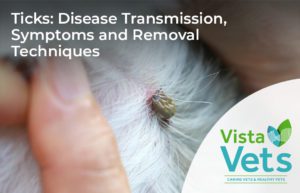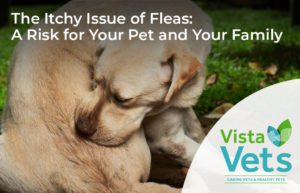
Ticks: Disease Transmission Symptoms and Removal Techniques for Pets
Ticks are external parasites, and globally they rival only mosquitos as carriers of disease. Their natural habitat is thick grass – fields, meadows, farmland

Ticks are external parasites, and globally they rival only mosquitos as carriers of disease. Their natural habitat is thick grass – fields, meadows, farmland

Fleas – putting your family at risk all year round Fleas are often considered to be a seasonal nuisance that are annoying for your pet,

Where worms come from, and what to do about them. Even outwardly healthy-looking animals can have worms, and they can cause suffering, illness and sometimes
Lorem ipsum dolor sit amet, consectetur adipiscing elit. Ut elit tellus, luctus nec ullamcorper mattis, pulvinar dapibus leo.
Sign up below to receive your £20 voucher for vista vets.
Plus, you’ll be the first to receive news and special offers.